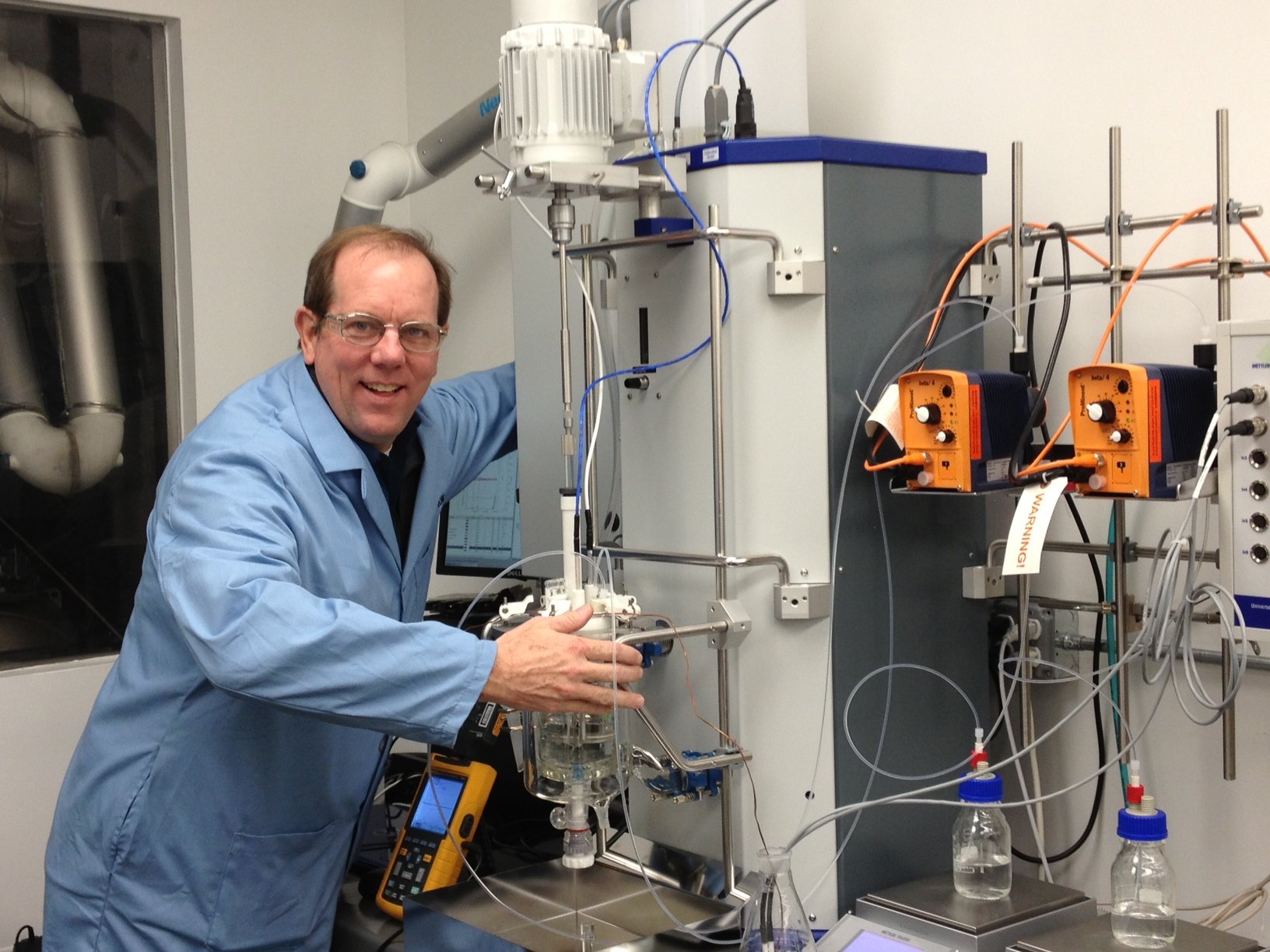Reaction Calorimetry Testing
One of the keys to safely scaling up a chemical process is managing the energy or heat flux that the intended chemical reaction produces, especially when that chemical transformation is exothermic in nature. When considering process scale-up whether the heat is removed via a jacket, a condenser, or a side loop heat exchanger in the plant reactor or partially allowed to heat up the mass, it is imperative to balance the cooling capacity at scale versus the projected heat flux rate and understand the total energy available due to the desired reaction should that cooling fail. The accepted technique for gathering this type of data in the industry is known as reaction calorimetry.

There have been many instruments developed over the years to accomplish this task and Fauske & Associates maintains a variety of devices so that we can design the most appropriate experiment to gather the vital heat rate and adiabatic potential data needed for a safe scale up. Couple this with our vast experience in characterizing runaway reaction behavior using adiabatic and vent sizing calorimetry and we can deliver you a complete picture of a safe chemical process.
Testing Services and Tools
THT-μRC
THT-μRC - this device is reaction calorimetry in a vial. The reactor is a GC vial or a metal pressure (SS or HC) cell, volume ~1.5 ml.
Features
- Agitation is via magnetic stir bar
- Temperature range is -5°C to 150 °C and pressures up to 10 bar are possible with the pressure cells
- The instrument has a 5-microwatt sensitivity
Modes of operation include isothermal with steps, titration with an integrated syringe pump, scan and hold (2°C/min max) and heat capacity determination. FAI is also developing this device for measuring binary compatibilities.
Mettler-Toledo RC1
The RC1 is a heat flow calorimeter. As such, the heat leaving or entering the reactor is characterized by UA(Tr-Tj) where U is the overall heat transfer coefficient, A is the area of heat transfer and Tr and Tj are the temperature of the reactor and jacket, respectively. The temperatures are measured, A is known by geometry and the heat transfer coefficient, U, is calibrated for via an immersed calibration heater before and after the reaction.
Features
- Available temperature range is -73°C to +230°C, pressure ambient to 2 bar
- Reactors are borosilicate glass, 500 ml or 1 liter
- Agitation via overhead stirrer with a conventional Teflon bearing or magnetic drive
- Glass or Hastelloy stirrers and baffles (the latter for difficult to stir systems)
Automated reagent additions can be performed with integrated balances using positive displacement Teflon diaphragm pumps or solenoid valves or dropping funnel with a solenoid valve and can also be coupled to pH measurement.
ChemiSens
The ChemiSens is a heat flux calorimeter that provides a true heat flow signal without requiring any calibration. The heat transfer surface is entirely through the bottom of the reactor making use of Peltier technology and is independent of the heat transfer coefficient as defined above.
Features
- Temperature range is -50°C to 200°C
- The combination 316 stainless steel glass reactor has a pressure rating to 20 bar though reactors of other materials of construction and higher pressure ratings are available
- Stirring is via a magnetically coupled drive (2000 rpm) with a variety of impellers and inserts
- Additions can be performed against pressure using a pressure syringe pump
- The pressure reactor has been outfitted for hydrogenation studies complete with a gas induction impeller and gas uptake rig
- Operation under reflux with or without gas generation is also possible